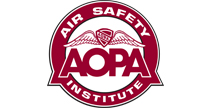Tight spot: Lessons from the Cory Lidle accident
DCA07MA003
 Accident Animation
Accident Animation
New York Times flight sequence animation (site registration required)
Anyone who’s ever flown a tight traffic pattern knows that most airplanes don’t turn on a dime. Add a fairly substantial crosswind, and silver dollar doesn’t even begin to describe the effect on turn diameter. Steepening the bank helps to a point—but not beyond the point where airspeed and stall speed become one and the same.
On Oct. 11, 2006, a Cirrus SR20 attempted a tight, 180-degree turn to reverse course over New York City’s East River. The aircraft drifted toward Manhattan during the maneuver, crashing into a high-rise apartment building and falling to the street below. The impact and post-crash fire killed the two pilots and seriously injured an apartment tenant.
The Cirrus departed nearby Teterboro Airport in Teterboro, N.J., about 2:30 p.m. The pilots—New York Yankees pitcher Cory Lidle and his California-based flight instructor Tyler Stanger—had indicated to friends that the purpose of the flight was to circle the Statue of Liberty. According to ATC transcripts, the pilots acknowledged that they were to remain clear of the New York Class B airspace. The Class B floor ranges from 1,500 to 1,100 feet msl over the Hudson and East Rivers, located west and east of Manhattan Island, respectively.
After takeoff, the Cirrus turned southeast toward the Hudson River, then followed the river past the southern tip of Manhattan to the Statue of Liberty. The aircraft’s altitude varied from 500 to 700 feet msl throughout the flight. At 2:36 p.m., after circling the statue, the airplane headed northeast toward the East River.
As the Cirrus followed the East River northbound past Manhattan, it approached the end of the river’s Class B exclusion—the airspace equivalent of a box canyon. Here the Class B floor transitioned from 1,100 feet msl to the surface, requiring either a 180-degree turn to reverse course or an ATC clearance to enter the Class B airspace near LaGuardia Airport.
At about 2:42 p.m., at an altitude of about 600 feet msl, the pilot began a left turn. During the maneuver, the airplane crossed over Roosevelt Island, which splits the East River into two channels. Radar data indicate the turn was only 75 percent complete as the Cirrus approached the Manhattan shoreline, prompting the pilot to aggressively increase the bank angle. Witnesses reported that the airplane began losing altitude and its wings were “wobbling.” The Cirrus pitched down before slamming into the north facade of a 520-foot-tall apartment building at roughly 330 feet above street level.
Radar analysis revealed that the pilot failed to use the full width of the river for the turn, beginning instead at a point in the middle of the East Channel (see graphic). In addition, an easterly wind of 13 knots would have caused a westward drift of 300 to 400 feet during the maneuver. These factors combined to reduce the effective available turn width from 2,100 feet to 1,400 feet. At 97 knots, the airplane’s approximate airspeed, such a turn would have required a minimum constant bank angle of 50 degrees. At 61 degrees of bank, however, the wing would stall.
Data indicate most of the turn was actually accomplished at a bank angle of only 40 to 45 degrees. With the maneuver incomplete and New York’s skyscrapers looming large, the pilot likely increased the bank beyond the 61-degree threshold, placing the Cirrus into aerodynamic stall while pulling through the turn. The NTSB determined that the accident’s probable cause was the pilots’ inadequate planning, judgment, and airmanship in the performance of a 180-degree turn maneuver inside of a limited turning space.
The pilots could have avoided their fate in several ways. Using the entire width of the river would have increased the turn diameter. Better yet, transitioning to the west side of the waterway and turning right—into the prevailing wind—would have decreased the required bank angle to 35 degrees, according to the NTSB. Extra altitude also would have helped. Climbing closer to the Class B floor of 1,100 msl would have placed the airplane above even the tallest buildings of eastern Manhattan, lessening the urge to aggressively bank to avoid imminent collision.
Lastly, and perhaps most importantly, if the pilots were uncomfortable with their chances of safely completing the turn, they could have contacted ATC and requested clearance to transit the Class B airspace. When safety of flight is at issue, pilots shouldn’t hesitate to reach out for ATC assistance.
The likelihood is slim that other pilots will find themselves in the same tight spot: The East River exclusion has been closed to most fixed-wing aircraft since the accident, and the FAA is taking steps to make this temporary flight restriction permanent. But the Cory Lidle accident reinforces the inherent risk pilots face during maneuvering flight—and the importance of planning, awareness, and solid airmanship. Bank angles beyond 30 degrees, for example, have no place in a traffic pattern. Snap decisions and aggressive efforts to salvage an overshot turn—such as base to final—can put the airplane at odds with the basic laws of aerodynamics. Unfortunately, when that happens, the theorems typically triumph.